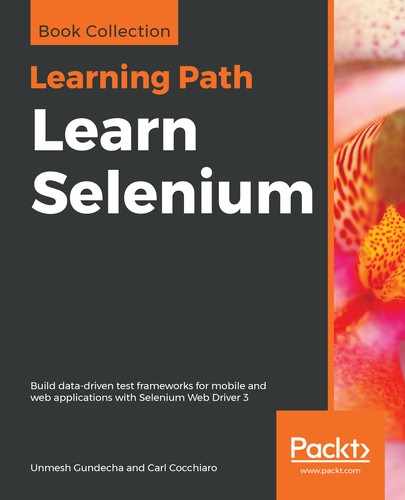In this chapter, we covered the Selenium Grid Architecture, which required changes to the setDriver method to support RemoteWebDriver, changes in the selenium.properties file, and changes to parameters passed in and processed from the suite XML file. The steps to create and configure the Selenium hub, browser, and mobile nodes were also outlined in this chapter, and several design patterns were discussed as to how to set up and maintain the nodes in a virtual cloud environment.
To test the use of grid features, users can take the sample bash and JSON config files in this chapter and create a local grid in their development environment. Once the driver class has all the required capabilities to cast the test to a RemoteWebDriver node, the user can build out a more robust cloud-based virtual grid using the same configurations, with the exception of changing the IP and host names in the grid configurations.
In the next chapter, third-party tools and add-ons to the framework will be discussed, as well as using a third-party grid platform such as Sauce Labs.
